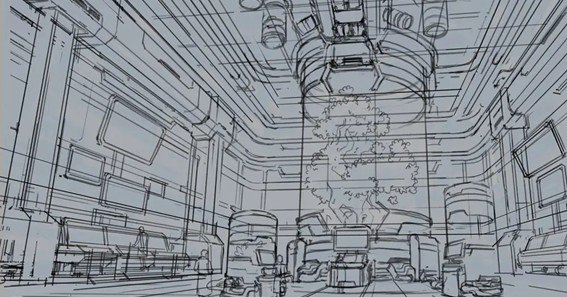Science fiction (sci-fi) drawings have long been a window into the boundless possibilities of human imagination, offering visual narratives that transport viewers to alternate realities, futuristic landscapes, and encounters with the unknown. These artworks not only entertain but also challenge our perceptions of technology, society, and the cosmos.
The Evolution of Sci-Fi Drawings
The roots of sci-fi art can be traced back to the early 20th century, with pulp magazines featuring fantastical illustrations of space travel and alien civilizations. As technology advanced, so did the complexity and depth of these artworks. The 1970s, in particular, marked a significant era where artists like Chris Moore shaped the sleek, airbrushed spaceship aesthetics that defined the genre during that period.
Notable Sci-Fi Artists
- Chris Moore (1947-2025): Renowned for his airbrushed depictions of spacecraft, Moore’s work became synonymous with science fiction literature in the UK across the ’70s, ’80s, and ’90s.
- Jess Johnson: A contemporary artist whose hand-drawn works feature bold colors and intricate geometric patterns, drawing inspiration from virtual reality and speculative fiction. Her art often explores themes of digital existence and alternate realities.
The Impact on Popular Culture
Sci-fi drawings have significantly influenced various facets of popular culture:
- Film and Television: Concept art serves as the foundation for visual storytelling in movies and series, helping to create immersive worlds that captivate audiences.
- Literature: Book covers adorned with sci-fi illustrations entice readers and set the tone for the narratives within.
- Video Games: Game designers utilize sci-fi art to develop environments, characters, and technologies that enhance interactive experiences.
Exploring Sci-Fi Art Today
For those interested in delving into the world of sci-fi art:
- Online Communities: Platforms like Reddit’s r/SciFiArt provide spaces for artists and enthusiasts to share and discuss sci-fi artwork.
- Art Platforms: Websites such as ArtStation host extensive portfolios from artists specializing in science fiction themes.
- Social Media: Accounts like 70s Sci-Fi Art on platforms like X (formerly Twitter) curate and share classic and contemporary sci-fi artworks, offering daily inspiration.
Conclusion
Sci-fi drawings continue to be a vital and dynamic form of artistic expression, pushing the boundaries of creativity and inspiring visions of what the future might hold. Whether through the pages of a book, the frames of a film, or the pixels of a game, these artworks invite us to explore the limitless possibilities of imagination.
FAQs
1. What defines a sci-fi drawing?
A sci-fi drawing typically portrays speculative concepts such as advanced technologies, extraterrestrial life, futuristic settings, and imaginative scientific phenomena.
2. How can I start creating my own sci-fi drawings?
Begin by studying existing sci-fi art for inspiration, practice drawing regularly, and consider learning digital art techniques to expand your toolkit.
3. Where can I find sci-fi art for purchase?
Many online platforms, such as ArtStation and Etsy, offer sci-fi art prints and originals from various artists.
4. Who are some contemporary sci-fi artists to follow?
Artists like Jess Johnson and platforms showcasing emerging talents are excellent resources for discovering contemporary sci-fi art.
5. How has sci-fi art influenced modern media?
Sci-fi art has shaped the visual aesthetics of films, video games, and literature, providing conceptual frameworks for futuristic and speculative storytelling.










